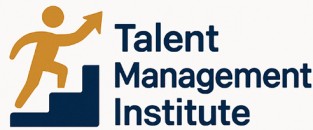
Understanding the Importance of Employee Wellness
Recognizing the Significance of Employee Health Initiatives
The concept of employee wellness has gradually become a focal point in the realm of talent management and workplace culture. As the demands of balancing work life and personal well-being become more complex, organizations are realizing the tangible benefits that stem from prioritizing the health of their workforce. Understanding the multifaceted nature of wellness programs not only involves enhancing physical health but also addressing mental health challenges to help employees thrive in the workplace. By investing in robust employee wellness programs, companies can promote a healthy, engaged, and resilient workforce. This is particularly important as stress levels, due to work and life balance issues, continue to rise, impacting overall employee well-being and productivity. Corporate wellness initiatives often include wellness ideas and program ideas that cater to both physical and mental wellness, creating a supportive office environment. The implementation of a successful wellness program entails crafting wellness activities that foster a positive work culture and improve employee engagement. Such programs not only cater to the immediate health needs of employees but also contribute towards a long-term healthy work environment. With the right wellness challenges and support, organizations can cultivate an environment where employees feel valued and motivated. For those interested in exploring the foundations of employee wellness further, "exploring key topics in staff development" offers insightful perspectives on integrating wellness into your talent management strategy.Creative Wellness Program Ideas
Fresh Approaches to Workplace Wellness
Encouraging a healthy workplace involves implementing creative program ideas that go beyond the standard fitness challenges. An effective wellness program must cater to the diverse needs of employees while aligning with company culture. Here are some innovative ways to enhance employee wellness:
- Customizable Wellness Activities: Allowing employees to customize their wellness journey can significantly boost engagement. Personalization promotes a sense of belonging and helps employees feel more invested in their health. Consider offering a selection of activities that accommodate various preferences, such as yoga, outdoor sports, or art therapy sessions.
- Inclusive Health and Fitness Initiatives: Encourage participation by designing initiatives that are inclusive and accessible to everyone in the workplace. Creating an environment where every employee, regardless of fitness level or physical limitations, can participate promotes a united company culture.
- On-site Health and Wellness Consulting: Having a wellness consultant visit the office weekly can provide employees with direct access to expert advice on both physical and mental health. This touchpoint helps reinforce healthy habits and provides a support system within the work environment.
- Gamification of Wellness Challenges: Utilize technology to create engaging wellness challenges that incorporate game mechanics. This can boost motivation and foster camaraderie among employees. Consider forming team-based challenges where participants can track progress through interactive apps.
The ultimate goal is to create an environment where both physical health and mental well-being are prioritized, promoting a lasting, healthy lifestyle that extends beyond the workplace. Incorporating these ideas into wellness programs can significantly reduce stress levels and enhance work-life balance, making the office a more positive space for all. For more insights into creating robust wellness programs, explore this resource on navigating remote work challenges in training and development.
Incorporating Mental Health Support
Focus on Mental Health in the Workplace
In the quest for a well-rounded employee wellness program, it's essential to prioritize mental health support. Offering mental health resources is as vital as promoting physical health and fitness in the workplace. When employees feel mentally well, they are more likely to be productive, engaged, and loyal to their organization. Creating a supportive environment involves a multi-faceted approach, including:- Mental Health Days: Implementing mental health days allows employees to recharge when they need it most, addressing both stress and burnout proactively.
- Workshops and Seminars: Regularly scheduled workshops and seminars can provide employees with practical tools to manage stress, promoting a balanced work-life dynamic and contributing to a healthier work culture.
- Access to Counseling: Offering access to counseling services, either through on-site services or partnerships with external professionals, can provide a confidential avenue for employees to seek help when necessary.
- Promoting a Stigma-Free Culture: Encouraging open conversations about mental health can demystify these topics, creating a more inviting workplace atmosphere and making employees feel safe in seeking support.
Leveraging Technology for Wellness
Embracing Digital Tools for Employee Wellness
In today's fast-paced work environment, leveraging technology has become a cornerstone of effective employee wellness programs. With the rise of digital solutions, companies can now offer more personalized and accessible wellness activities that cater to the diverse needs of their workforce.
One of the primary benefits of integrating technology into wellness programs is the ability to provide real-time support and resources. Mobile apps, for instance, can offer employees access to mental health support, fitness tracking, and stress management tools right at their fingertips. These digital platforms not only promote physical health but also help employees maintain a healthy work-life balance.
Innovative Tech Solutions for a Healthier Workplace
- Wearable Devices: These gadgets can monitor physical activity, sleep patterns, and even stress levels, providing employees with insights into their health and wellness.
- Virtual Fitness Classes: Offering online fitness sessions allows employees to participate in wellness activities from the comfort of their homes or offices, making it easier to incorporate physical activity into their daily routines.
- Mental Health Apps: Apps focused on mental wellness can offer guided meditations, stress-relief exercises, and access to professional counseling, supporting employees' mental health needs.
- Online Wellness Challenges: Digital platforms can host wellness challenges that encourage employee engagement and foster a sense of community within the workplace.
By embracing these technological advancements, companies can create a more inclusive and supportive wellness culture. This not only benefits the employees by enhancing their overall health and wellness but also contributes to a more productive and engaged workforce.
Measuring the Success of Wellness Programs
Assessing the Effectiveness of Your Employee Wellness Strategy
In today’s competitive job market, maintaining employee wellness programs is crucial for fostering a productive and healthy workplace. However, simply having a program in place is not sufficient; companies must measure the success of their initiatives to ensure they are meeting their goals and truly contributing to employee well-being. One effective approach to gauge the success of wellness programs is by leveraging employee feedback. Surveys and regular check-ins present a straightforward method to understand what employees genuinely think about wellness activities, mental health support, and other components of corporate wellness. Such feedback can provide invaluable insights into which aspects of the program are resonating well with employees and which may need refinement. Analytics play a pivotal role in measuring program effectiveness. By tracking participation rates and correlating them with health outcomes such as reduced sick days and lower stress levels, organizations can quantify the tangible benefits of their wellness programs. Analyzing these metrics not only highlights the success of current initiatives but also informs future wellness ideas and adaptations. Evaluating the impact of mental health support is also critical. Changes in employee productivity, creativity, and overall workplace culture can indicate whether mental health resources are adequately aiding employees and aligning with company goals. Monitoring such factors can reveal whether mental health initiatives are effectively integrated within the wider wellness strategy. It is crucial to recognize that employee wellness is not a one-size-fits-all approach. Companies should remain flexible, constantly reviewing and updating their wellness challenges and program ideas to better fit the evolving needs of their workforce. A successful wellness program aligns closely with the organization's culture, supporting a balanced work-life environment and enhancing employee engagement overall. By continuously assessing and adapting their wellness activities, organizations can create a vibrant, healthy work environment where employees feel valued and supported, both physically and mentally. This not only boosts productivity but cultivates a positive and inclusive company culture committed to employee well-being.Case Studies of Successful Wellness Programs
Real-Life Successes: Companies Championing Employee Health
Successful employee wellness programs often serve as models for other organizations seeking to boost health and well-being in the workplace. Here are a few prime examples of companies that have excelled in establishing innovative programs focused on fostering a healthy work culture.- Corporate Wellness Programs that Embrace Holistic Health: Many businesses have realized the significance of incorporating both physical and mental health initiatives into their wellness happenings. For instance, some companies have successfully integrated fitness challenges and mental health support workshops, creating a balance that helps employees manage stress while promoting overall wellness.
- Tech-Forward Wellness Initiatives: By leveraging technology, several organizations innovate in offering virtual wellness challenges, personalized fitness regimens, and mental health apps. These digital solutions cater to the diverse needs of employees, making wellness programs accessible and engaging, regardless of an individual's location.
- Employee Engagement Through Program Ideas: Employee engagement is crucial in the success of wellness programs. One standout approach is the customization of wellness activities based on employee surveys and feedback. This inclusive method ensures that programs align with the interests and needs of the workforce, leading to higher participation and satisfaction.
- Long-Term Benefits and Work-Life Balance: Companies that have shown a commitment to sustaining these wellness initiatives report significant improvements in employee well-being, leading to reduced stress levels and a better work-life balance. The long-term benefits are evident not only in happier, healthier employees but also in increased productivity and reduced healthcare costs.













